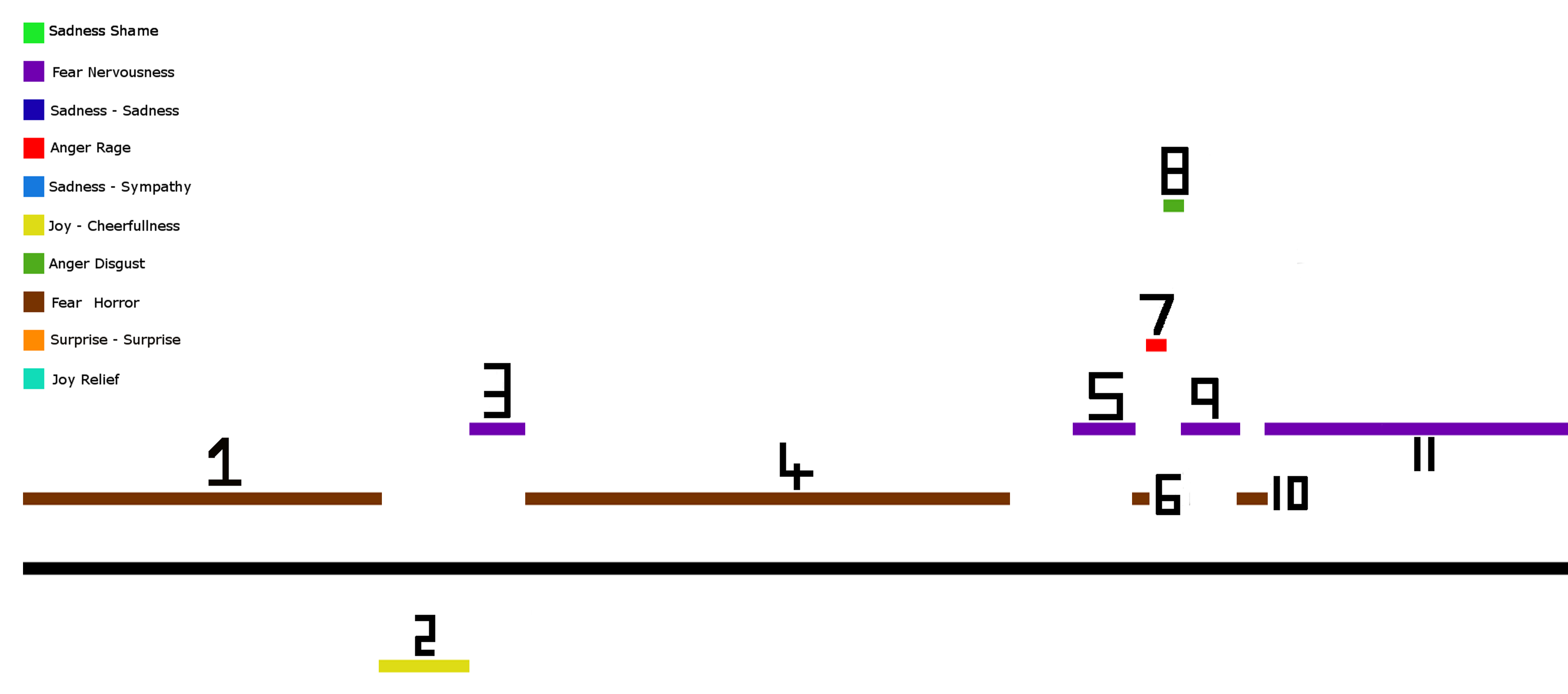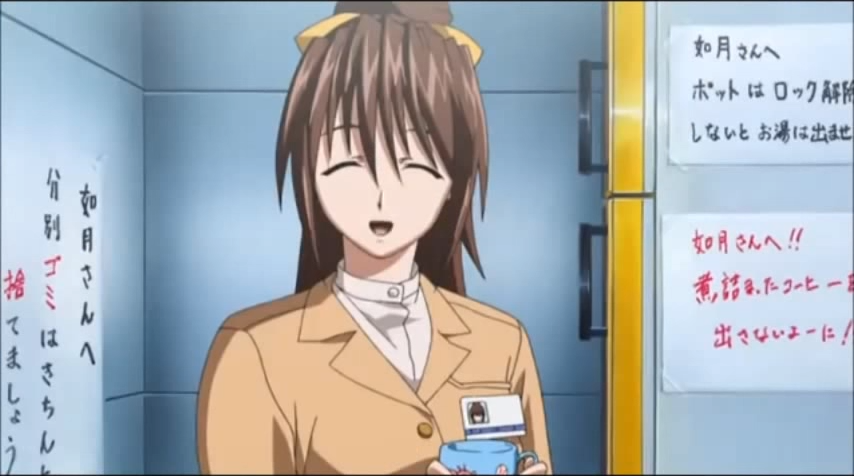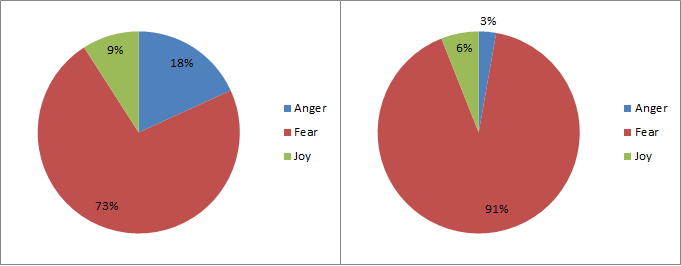The format of this piece will be a description of Elfen Lied Episode 1 Scene 1 with a to scale time line with emotion sections plotted with the following [itg-mediatip href=”https://somegamez.com/project/elfen-lied-study/attachment/episode_1_time_line” mediatip-type=”localimage” mediatip-content=”{&aquot;url&aquot;:&aquot;https://somegamez.com/wp-content/uploads/2016/02/episode_1_time_line.png&aquot;,&aquot;id&aquot;:2917,&aquot;link&aquot;:&aquot;https://somegamez.com/project/elfen-lied-study/attachment/episode_1_time_line&aquot;}” mediatip-link=”undefined”]Key[/itg-mediatip], where [itg-tooltip tooltip-content=”<p>High Emotions refer to Emotions that connote ‘happy’ like feeling e.g Joy, Surprise and Love.</p>”]High Emotions[/itg-tooltip] are plotted below the time line (black line) and [itg-tooltip tooltip-content=”<p>Low Emotions refer to Emotions that connote ‘sad’ like feeling e.g Anger, Fear and Sadness.</p>”]Low Emotions[/itg-tooltip] are plotted above.
Following this there will be a number of pie charts in the following format. Pie charts on the left are [itg-tooltip style=”color: #ca3c08; text-decoration: overline underline; font-style: italic; font-family: ‘Source Sans Pro’, Helvetica, sans-serif; font-size: 16px; font-variant: normal; font-weight: normal; letter-spacing: normal; line-height: 21.8182px; orphans: auto; text-align: start; text-indent: 0px; text-transform: none; white-space: normal; widows: 1; word-spacing: 0px; -webkit-text-stroke-width: 0px; background-color: #ffffff;” tooltip-content=”<p>A sum of the number of occurences of a category of emotion.</p>”]Totals[/itg-tooltip] of the scene, and pie charts on the right are [itg-tooltip style=”color: #ca3c08; text-decoration: overline underline; font-style: italic; font-family: ‘Source Sans Pro’, Helvetica, sans-serif; font-size: 16px; font-variant: normal; font-weight: normal; letter-spacing: normal; line-height: 21.8182px; orphans: auto; text-align: start; text-indent: 0px; text-transform: none; white-space: normal; widows: 1; word-spacing: 0px; -webkit-text-stroke-width: 0px; background-color: #ffffff;” tooltip-content=”<p>A sum of the time spent during the episode on each category of emotion.</p>”]Screen Time[/itg-tooltip]. Lastly the raw data for this scene will be presented in the form of a table.
Follow this link to the main entry for this article series.
Spoiler Alert! You’ve been warned!
With that out of the way lets begin! (A video of the scene is at the end of the post if you wish to watch it first!)
Scene One
Elfen Lied Episode 1 Scene 1 begins with a severed hand, in a facility which is clean, cold, and deathly silent. We are thrown into a series of grizzly scenes with absolutely no context [itg-tooltip tooltip-content=”<p><em>Section 1</em> can likely be further broken down further into smaller sections of <em>Nervousness </em>and<em> Horror</em> as the creators jump in and out of Lucy’s cell with shots including the cell door; likely to leave it the security guards fate to the viewers imagination. </p>”](1)[/itg-tooltip] .

The scene then shifts to one of a different tone. The appearance of Kuramas secretary Kisaragi serves as the only high section (2) of the scene injecting a dose of Cheerfulness that likely sets up a contrast with the emotions of Horror mixed with Nervousness from Section 1, creating a feeling of dread which is underscored by a tense section of guards preparing and an out of place Kisaragi with a cheery panda mug (3).

Akin to this technique would be a scene of a raging tornado followed by a scene of a butterfly flying in a serene but increasingly windy meadow. This feeling of dread is confirmed when our metaphorical butterfly Kisaragi flys head first into our Tornado, Lucy.

After having killed a number of guards, some of whom no longer posed a threat (4), Lucy gruesomely kills Kisaragi which likely evokes feelings of Anger (7) followed by Disgust (8). Lucy shows no mercy to the innocent, or respect for the dead using Kisaragis headless corpse as an unnecessary shield, perhaps to provoke Kurama.

Kisaragi function is to access other emotions, and break up the overwhelming amount of Fear in the scene. We see her death is in a period of [itg-tooltip tooltip-content=”<p>High Emotional Activity refers to a period of time in which many Emotion Sections occur.</p>”]High Emotional Activity[/itg-tooltip] which we can see in the timeline from (5-9) and it evokes Rage and Disgust. Lucy then proceed to kill a number of guards and ultimately escapes from the prison (9, 10, 11).
The opening scene at least leaves the viewer with a dislike of Lucy as well, and captures our attention with such dark imagery without context, leaving us curious, and it is Kisaragi who brings the most [itg-tooltip style=”color: #ca3c08; text-decoration: overline underline; font-style: italic; font-family: ‘Source Sans Pro’, Helvetica, sans-serif; font-size: 16px; font-variant: normal; font-weight: normal; letter-spacing: normal; line-height: 24px; orphans: auto; text-align: start; text-indent: 0px; text-transform: none; white-space: normal; widows: 1; word-spacing: 0px; -webkit-text-stroke-width: 0px; background-color: #ffffff;” tooltip-content=”<p>Emotional Variety is a term for stating the number of different types of Emotions, where High is many and Low is few.</p>”]Emotional Variety[/itg-tooltip] to this scene, being the main cause for the scenes Rage, Disgust and Cheerfulness.
Pie Charts

Low Sections vastly outnumber High Sections in this scene in terms of both Screen Time and Totals making it a [itg-tooltip tooltip-content=”<p>A Low Scene is a scene that contains more Low Sections than High Sections.</p>”]Low Scene[/itg-tooltip].

Fear makes up 73% in Totals, and is 17% greater in value in Screen Time, and from the Time Line we can see that we have more numerous, and longer periods of Fear than other Primary Emotions in this scene.
We can see the inverse in Anger which makes up for 18% in Totals but only 3% in Screen Time which from the Time Line shows we have shorter and fewer sections of Anger in this scene.

When we break down each of the Primary Emotions in Elfen Lied Episode 1 Scene 1 we find that from Fear, Horror and Nervousness were near equal in Totals, but in Screen Time Horror was 29% greater than Nervousness.
Cheerfulness remained relatively equal, but Disgust and Horror received much less Screen Time in comparison to their Totals values.
Raw Data
| # | Time | High/Low | Primary Emotion | Secondary Emotion | Description |
|---|---|---|---|---|---|
| 1 | 1:30 – 3:13 | Low | Fear | Horror | Lucy breaks free. |
| 2 | 3:13 – 3:39 | High | Joy | Cheerfulness | Meeting Kisaragi – Kurama’s secretary. |
| 3 | 3:39 – 3:55 | Low | Fear | Nervousness | Security guards prepare. Kisaragi clumsy with happy mug. |
| 4 | 3:56 – 6:15 | Low | Fear | Horror | Lucy kills lots of guards. |
| 5 | 6:34 – 6:52 | Low | Fear | Nervousness | Lucy opens blast doors to see lots of guards. Kisaragiragi falls in front of Lucy. |
| 6 | 6:52 – 6:57 | Low | Fear | Horror | Lucy kills Kisaragi. |
| 7 | 6:57 – 7:03 | Low | Anger | Rage | Kurama orders many guards to open fire on Lucy. |
| 8 | 7:03 – 7:09 | Low | Anger | Disgust | Lucy uses Kisaragi’s body as a shield. |
| 9 | 7:09 – 7:26 | Low | Fear | Nervousness | Lucy begins counter attack. |
| 10 | 7:26 – 7:35 | Low | Fear | Horror | Lucy kills guards. |
| 11 | 7:35 – 9:02 | Low | Fear | Nervousness | Lucy gets trapped then is shot while leaving facility and falls. |
Totals Counts
Statistics related to Totals in Elfen Lied Episode 1 Scene 1.
High/Low
| High | Low |
|---|---|
| 1 | 10 |
Primary Emotions
| Anger | Fear | Joy |
|---|---|---|
| 2 | 8 | 1 |
Secondary Emotions
| Cheerfulness | Disgust | Horror | Nervousness | Rage |
|---|---|---|---|---|
| 1 | 1 | 4 | 4 | 1 |
Screen Time Counts
Statistics related to Screen Time in Elfen Lied Episode 1 Scene 1.
High/Low
| High | Low |
|---|---|
| 26 | 406 |
Primary Emotions
| Anger | Fear | Joy |
|---|---|---|
| 12 | 394 | 26 |
Secondary Emotions
| Cheerfulness | Disgust | Horror | Nervousness | Rage |
|---|---|---|---|---|
| 26 | 6 | 256 | 138 | 6 |
Elfen Lied Episode 1 Scene 1
https://youtu.be/fZEw3cNAFc4